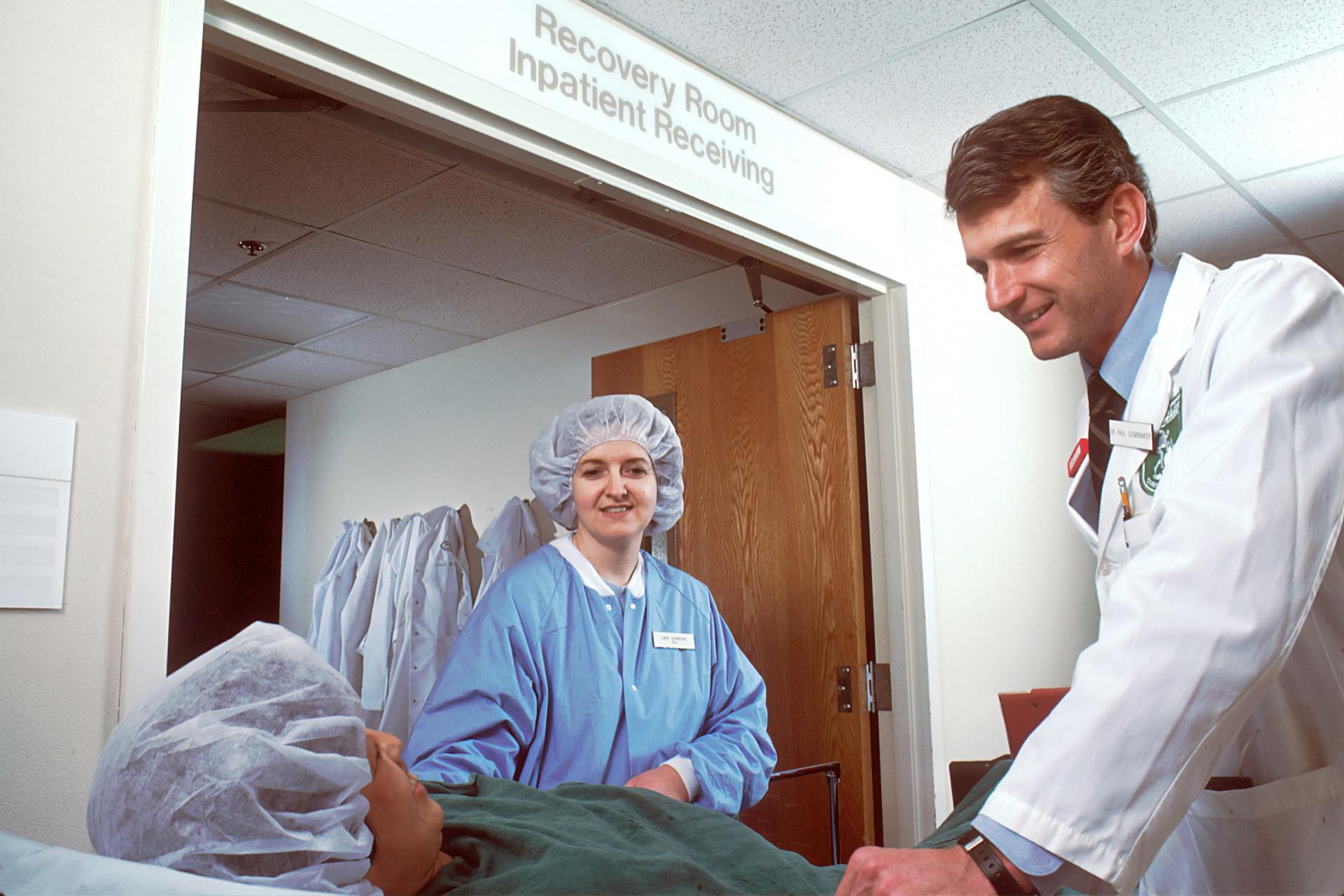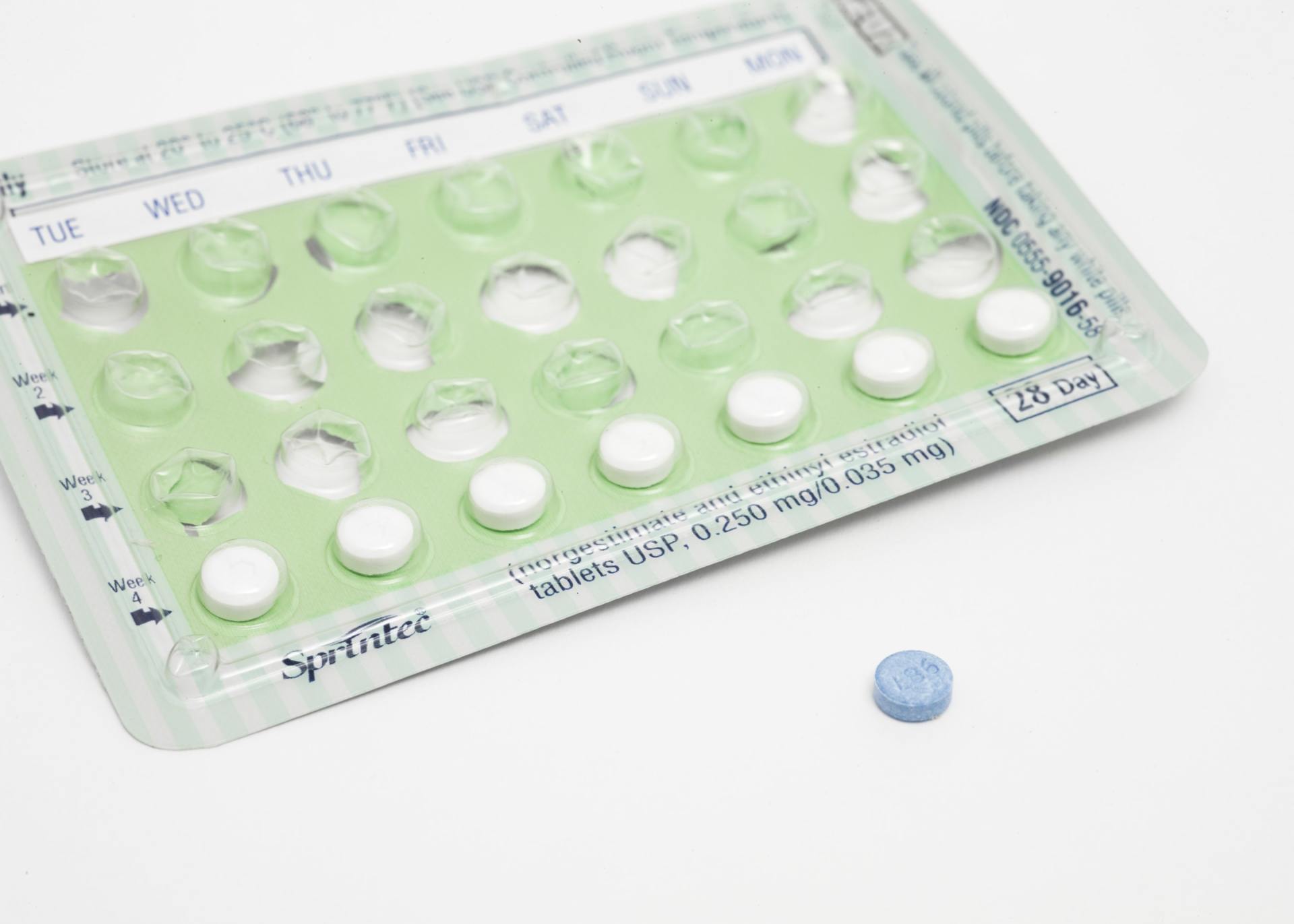Antimicrobial Stewardship
Point-of-care interventions
Key points
- Point-of-care interventions (POCIs) are timely interventions that occur at a patient level and have a direct effect on improving patient management and outcomes.
- Examples of POCIs include:
- de-escalating therapy: this is often possible within 48-72 hours initiation when further clinical and diagnostic information becomes available. Examples include:
- directing therapy based on microscopy, rapid tests, microbiological culture and susceptibility results; and
- de-escalating therapy based on clinical improvement.
- In some cases, it may be necessary to escalate therapy or refer the patient for formal expert review.
- optimising dose to ensure optimal therapy effect whilst minimising patient toxicity. This can include dose adjustments based on patient weight, renal function, utilising therapeutic drug monitoring and checking for drug interactions.
- switching from IV to oral therapy once patients have met objective switch criteria;
- reviewing duration of therapy such that an antimicrobial is used for the shortest period of time required to treat the infection and avoiding unnecessarily prolonged course duration;
- reviewing patient allergies to ensure that allergies are appropriately documented and communicated; and
- optimising surgical prophylaxis to ensure there has been appropriate coverage of likely pathogens and avoiding prolonged post-operative duration of prophylaxis
What are point-of-care interventions?
Point-of-care interventions (POCIs) are interventions that occur at a patient level and are one of the most effective aspects of AMS in hospitals. They have a direct effect on improving patient management and outcomes, and their timely nature provides excellent opportunities to educate clinical staff on appropriate antimicrobial prescribing and monitoring.
Types of point-of-care interventions
Which interventions are selected, how they are delivered and by whom will be determined by local resources and the expertise available. Whilst some of the POCIs described on this page require specialist knowledge, others can be successfully performed by any clinician involved in direct patient care (e.g., de-escalation of therapy based on microbiological culture, IV-to-oral switch, allergy review). This allows all clinicians to be involved in AMS activities, rather than AMS being the sole responsibility of the AMS team or champion.
Examples of POCIs include:
- Rationalising or de-escalating therapy, including through:
- directed therapy based on microscopy and other rapid tests, and
- directed therapy based on culture and susceptibility results; and
- de-escalating based on clinical improvement;
- optimising dose;
- switching from IV to oral therapy;
- managing duration of therapy;
- reviewing patient allergies; and
- optimising surgical prophylaxis.
A 48-hour 'time out'
The concept of having a ‘time-out’ at the 48-hour mark to stop, think and review the patient’s management is a useful campaign to introduce. Many of the POCIs described in this chapter can be performed at this time-point. At 48 hours:
- Re-evaluate the patient. Is the diagnosis still what was initially thought? Can antibiotics be stopped if it is not an infection?
- Check any microbiology results. Can therapy be streamlined to better target the pathogen identified? Is a change in therapy required?
- Has the patient clinically improved? If so, consider de-escalation of therapy. If the microbiology investigations have not identified a resistant pathogen, then the initial broad-spectrum empiric antibiotic therapy for a severely ill person may no longer be necessary.
- If the patient is not responding clinically, re-evaluate the diagnosis. Does the antimicrobial therapy need to be escalated? Are additional investigations needed?
- Is the patient eating and drinking? Can they be switched to oral therapy?
- Determine the intended duration of therapy and set an end-date if possible.
- Check the patient’s renal function.
- Checked results of any therapeutic drug monitoring.
- Consider a formal referral to infectious diseases if the patient is not improving or microbiological testing reveals an unexpected pathogen or resistance to common antibiotics, or if the clinical problem is likely to require prolonged antibiotic therapy.
Rationalising or de-escalating therapy
Empiric antimicrobial therapy tends to be broad in spectrum to maximise the chance of providing activity against potential pathogens while diagnostic tests are being performed. However, it is often possible to rationalise a patient’s antimicrobials within 48-72 hours of initiation when further clinical and diagnostic information becomes available.
De-escalation of therapy refers to narrowing the spectrum of empiric antimicrobial therapy to better suit the patient’s clinical state and laboratory findings, thereby minimising unnecessary antimicrobial exposure and limiting antimicrobial associated adverse events. Furthermore, de-escalation has been demonstrated to be safe and not associated with poorer patient outcomes.
There are a number of ways in which de-escalation can occur.
1) Directing therapy based on microscopy and other rapid tests
For some conditions, empiric therapy can be improved upon using microbiological test results that are available within hours of specimen collection. Examples include:
- microscopy and Gram stain;
- fast specimen processing of cerebrospinal fluid to conduct cell counts, and antigen tests for suspected meningitis;
- microscopy in urethritis/cervicitis, which might help diagnose gonococcal disease;
- polymerase chain reaction (PCR) testing which can facilitate early diagnoses of conditions such as influenza, or may distinguish between methicillin-susceptible and methicillin-resistant Staphylococcus aureus;
- MALDI-TOF, which may enable early identification of bacteria from critical sites (e.g., blood culture); and
- rapid procalcitonin tests, whereby a persistently low result may help guide early cessation of antimicrobials.
2) Directing therapy based on culture and susceptibility test results
Bacterial culture and antimicrobial susceptibility test results are usually available 48-72 hours after specimen collection, and these results should be used to optimise a patient’s antimicrobial therapy. This can include:
- rationalising or de-escalating antimicrobial therapy;
- ceasing additional antimicrobials that will not improve outcome;
- rationalising antimicrobial combinations if there is unnecessary overlap of spectrum of activity; and
- discontinuing antimicrobial therapy altogether if testing does not demonstrate evidence of an infection.
3) De-escalation based on clinical improvement
When a patient is seriously ill, empiric broad-spectrum antibiotic therapy is often commenced to try to treat most of the possible pathogens while awaiting the results of investigations.
Some cases are fortunate whereby the investigation results provide a likely pathogen and susceptibility profile that can guide ongoing antibiotic therapy.
In many cases, investigations are inconclusive and do not clearly identify a pathogen, and hence an empiric course of therapy needs to be continued. In many cases, broad–spectrum empiric antibiotic therapy is often unnecessarily continued for the entire duration of the treatment course. However, if the patient is clinically improving, it is very reasonable to de-escalate antibiotic therapy by moving from broad-spectrum to narrower-spectrum choices, and/or switching from IV to oral therapy. For example, the finding of a negative blood culture, or a sputum sample that does not identify copious Gram-positive cocci in clusters, might be used as some reassurance that certain pathogens are unlikely to be present.
De-escalation should be considered in all patients on a daily basis while they're receiving broad-spectrum antimicrobials in order to attempt to rationalise therapy to a more appropriate regimen. Certainly, the patient should be monitored clinically each day to ensure that the change in therapy has been safe.
In some situations, clinical samples may not have been taken for relevant microbiologic investigations at all before the broad-spectrum antibiotics were started. These situations are more difficult to manage but it should not preclude the practice of de-escalation. The temptation is to leave the patient on the broad-spectrum empiric agents because they are responding to it; however, in most cases a switch can still be safely attempted under close clinical review.
Clinical samples taken after a dose of antibiotics may not be entirely unhelpful. Although the bacteria may not grow, the Gram stain might still identify a prominent type of bacteria that might help to guide the clinician. Non-culture-based investigations may also be useful, e.g., antigen tests and PCRs as these may not be so significantly affected by prior antibiotics.
Example: De-escalation based on clinical improvement for hospital-acquired pneumonia
The safety of de-escalation in culture-negative patients has best been demonstrated in hospital-acquired pneumonia. Pneumonia is one of the more common situations in which identification of a pathogen is unusual.
For example, it is a quite common practice that a patient commenced on empiric piperacillin-tazobactam for a severe hospital-acquired pneumonia, and who improves rapidly clinically, is safely switched to oral amoxicillin-clavulanate over subsequent days.
Similarly, in hospitals with high rates of hospital-acquired MRSA, vancomycin might be added to the empiric regimen for a severely ill patient, but this could be ceased at 48 hours if blood cultures and cultures of other relevant clinical samples fail to demonstrate the presence of MRSA in a given patient.
Without clinically driven de-escalation, a patient who starts on empiric vancomycin and piperacillin-tazobactam would typically stay on these antimicrobials throughout their entire treatment course (e.g., 7 days) if the cultures were negative. This would be likely to result in significant over-treatment for many patients and many settings.
Escalation of therapy and referral for formal expert review
Whilst the majority of AMS POCIs are focused on de-escalation of therapy, it is equally important to realise that in some cases, it may be necessary to broaden the spectrum of activity if testing reveals an unexpected organism or resistance to the empiric antimicrobial choice. Furthermore, patients may benefit from formal review by an infectious diseases clinician of they are not clinically improving, have complex or life-threatening infections, have multiple antimicrobial allergies or have an unusual or multi-resistant pathogen isolated.
If infectious diseases experts are not available on-site, then specialist advice should be sought elsewhere.
Dose optimisation
A patient’s antimicrobial dosing regimen should be optimised to ensure it has the best ability to treat the infection while minimising patient toxicity. Pharmacists are able to play a key role in dose optimisation when reviewing or dispensing antimicrobials.
An antimicrobial’s dosage should be optimised based on the:
- pharmacokinetic and pharmacodynamic characteristics of the drug (e.g., concentration or time-dependent killing, toxicities);
- characteristics of the pathogen (e.g., minimum inhibitory concentration);
- patient characteristics (e.g., weight, renal and hepatic function); and
- site of infection (e.g., adequate penetration into cerebrospinal fluid).
Examples of dose optimisation include:
- adjusting dose according to patient weight (actual body weight, ideal body weight);
- utilising therapeutic drug monitoring to guide appropriate dosing and minimise toxicity (e.g., for aminoglycosides and vancomycin);
- adjusting dose for patients with renal dysfunction who are receiving antimicrobials that are cleared by the kidney;
- checking for drug-drug interactions;
- monitoring for known side effects;
- checking that oral antimicrobials are able to be adequately absorbed (e.g., interactions with food or enteral feeding, impaired absorption if excessive vomiting or diarrhoea);
- considering extended or continuous infusions of beta-lactams if required; and
- optimising dosing for the site of infection (e.g., ensuring there is adequate penetration into CSF, bone, etc.).
Switching from intravenous to oral therapy
The promotion of IV-to-oral switch is a safe and relatively straightforward intervention that helps to optimise clinical outcomes and minimise untoward reactions of antibiotics. Advantages include reduced medication costs, reduced workload for medical and nursing staff, reduced incidence of line-related infections and a shorter length of hospital stay without compromising patient safety.
Certain antimicrobials have excellent oral bioavailability whereby similar systemic concentrations are achieved whether they are administered intravenously or orally. Examples include fluoroquinolones, metronidazole, clindamycin, linezolid, co-trimoxazole and azole antifungals. These agents are ideal candidates for early IV-to-oral switch; however, there are many other antimicrobials that may be appropriate once the patient has satisfied switch criteria.
An IV-to-oral switch program is an ideal way of involving all clinical staff in an AMS activity. The program implementation should be overseen by the AMS team or local champion; however, any clinician involved in direct patient care can perform the interventions. For example, nursing staff are ideally placed to identify patients that are ready to switch to oral therapy (e.g., patients that have clinically improved and are eating and drinking) and for alerting the treating doctor.
For such a program to be successful, clear guidelines should be established determining which patients can be switched from IV to oral therapy according to objective criteria, which patients should not be switched, and suggestions for an appropriate oral agent. Patients who do not yet meet criteria should be reviewed daily, and, once the switch has occurred, should continue to be monitored for response to therapy where possible. The specific IV-to-oral switch criteria should be determined by the AMS team. However, this is a well-documented intervention and there are many published guidelines and resource materials available. A sample checklist of activities for implementing an IV-to-oral switch campaign is provided at the end of this page.
Duration of therapy
Antimicrobials should be used for the shortest period required to treat the infection. Unnecessarily prolonged duration of antimicrobial therapy is a common problem amongst hospitalised patients, and can lead to adverse effects, emergence of drug-resistant organisms, and increased health care costs.
Almost all infections have standard treatment durations, although these need to be tailored to the individual patient’s response to treatment. Nonetheless, this information can be summarised into a simple poster or one-page information sheet which can be a useful reference for clinicians.
Clinicians should be encouraged to review an antimicrobial on a daily basis, determine an appropriate duration of therapy, and clearly document a planned review- or stop-date in the healthcare record or medication chart.
Review of patient allergies
Adverse drug reactions (ADRs) and hypersensitivities to antimicrobials are commonly reported and require increased vigilance in healthcare.
It is essential for hospitals to have procedures dedicated to the management of reaction information as well as the management of the hypersensitivity reactions and ADRs themselves.
Any reported allergies or ADRs should be appropriately documented in the medical and medication records. This includes the patient’s medical notes, medication chart, administration record, identifying wristband and any other records used by healthcare professionals.
Checks for allergies should be performed at multiple points of care, including during the prescribing, dispensing and administration of medications.
It is useful to evaluate the patient records to determine if reported hypersensitivity is true or likely. Many reported adverse drug reactions are not immune-mediated and are, therefore, not true allergies. If there is any doubt, the patient or family may be questioned for further information.
If the reaction is a side effect (e.g., nausea or vomiting) rather than an allergy, then efforts should be made to “de-label” the patient’s allergy. It is well demonstrated that patients with allergy labels receive second-line antibiotics which are often associated with inferior clinical outcomes.
Severity, duration, type and other clinical history will help determine the options open for antimicrobial therapy. Guidelines should provide information to accommodate appropriate choices for people with non-immediate and immediate penicillin allergies.
For immediate or delayed hypersensitivity reactions with clear history, the following actions can be taken:
- Consider if the antibiotic is indicated at all.
- Use alternative antimicrobial therapy. Consider cross reactivity of related antimicrobials. Alternatives in related chemical classes are possible alternatives.
- In selected situations with appropriate expert support, there may be formal strategies that can be undertaken to clarify whether an allergy is in fact true.
- In cases of non-severe allergies, one may consider whether a supervised dose of the antimicrobial of choice is warranted. This is also called a graded challenge.
- Where facilities are available, skin prick testing may also be available to clarify the allergy status.
- Where a given antimicrobial is likely to be required in the future, if can be very useful to refer the patient to an immunologist to clarify the status.
- In practice, systems should be put in place to prevent errors to do with allergy (e.g., where a penicillin-containing medication is given to a patient with penicillin allergy). Some strategies and include:
- prescribing by generic name rather than brand name. This requirement should be included in the hospital’s antimicrobial prescribing policy or procedure document
- If antimicrobials are routinely kept as ward stock, placing ‘shelf talkers’ (small cards placed next to stock to act as visual prompts) to remind nursing staff that particular drugs belong to particular categories can be very useful (e.g., a small card saying that piperacillin-tazobactam is a penicillin and should not be used in people with penicillin allergies).
- Making available simple documents that summarise which antimicrobials are safe to administer based on the type of allergic reaction (e.g., a penicillin allergy poster).
Surgical prophylaxis
The majority of hospitals perform surgical procedures, and hence ensuring appropriate surgical antimicrobial prophylaxis (SAP) prescribing is an important component of an AMS program. Hospitals should have clear SAP prescribing guidelines that detail the antimicrobial choice, dose, route and duration for the range of surgical procedures performed at that institution.
As a point-of-care intervention, the review of patients prescribed antimicrobials for SAP is a good opportunity to ensure that there has been appropriate coverage of likely pathogens through peri-operative antimicrobial prophylaxis use, while avoiding prolonged post-operative duration of prophylaxis. The vast majority of procedures do not require any post-operative prophylaxis, although prophylaxis may extend for 24 hours for some procedures such as cardiac surgery, vascular surgery and lower limb amputation. Any post-operative prophylaxis which has been continued beyond 24hours should be reviewed with a view to ceasing it.
Whilst automatic stop orders are controversial, they may be considered useful for SAP as a way of minimise inappropriate prolongation of SAP prescriptions. It is important to note that there is limited evidence to support the efficacy of automatic stop orders. Both advantages and disadvantages exist, and AMS committees must review their services and resources before considering implementation. It is vital that the implementation of such a policy is carefully managed and communicated to ensure there is no patient harm from inappropriate early cessation of therapy.
Sample checklist for designing an intravenous-to-oral switch campaign
Planning phase
- Define circumstances under which an IV-to-oral switch can occur, considering:
- objective criteria such as:
- temperature;
- white cell count;
- days of IV therapy;
- whether they are tolerating oral therapy (i.e., are they receiving other medications orally?);
- clinical improvement;
- which clinical conditions require prolonged IV therapy and, therefore, are to be excluded from the IV-to-oral switch recommendations (e.g., infective endocarditis, meningitis).
- Collect some baseline data – this will help to quantify your hospital’s current practice and the gaps that need to be addressed. This information will also be useful to communicate to clinicians during the campaign implementation.
- Determine which areas will be included in the data collection. This will depend on your level of resources – you may decide to focus on a few key wards, specialties or sample a random selection of patients from all wards.
- Determine how patients for inclusion will be identified. For example, you could perform a point prevalence audit on certain wards and include any patient that is currently receiving intravenous antimicrobial therapy.
- Create a data collection form which could include the following information:
- basic patient demographics;
- the condition being treated;
- the antimicrobials that the patient has received;
- the duration of IV therapy thus far;
- whether they are tolerating oral therapy;
- the criteria that you have defined in part 1 above – temperature, white cell count, clinical improvement, etc.; and
- an assessment of whether the patient is suitable for oral switch.
- Collect some qualitative data, e.g., speak to a selection of clinicians and ask them why they do or do not switch to oral therapy and why that is the case.
- Identify and communicate with relevant stakeholders.
- It is useful to collect qualitative data by speaking with clinicians to determine their opinion on IV-to-oral switch, whether they perceive any barriers to oral switch, etc.
- Discuss at relevant committee meetings.
- Determine if there are any face-to-face meetings need to be held during the campaign and ensure that the time slots are booked and the necessary people available.
- Identify key champions and ask for their support in driving this initiative and leading by example.
- Draft e-mails or letters to key clinical leads communicating why this campaign is needed.
- Identify barriers and enablers.
- What are the barriers to implementation and how might you overcome or mitigate these?
- Are there enablers and how could these be harnessed or incorporated into your campaign?
- Prepare your campaign materials.
- Write clear, easy-to-read guidelines to assist clinicians in determining when patient can be switched to oral therapy.
- Create a simple poster, pocket-sized summary cards or lanyard cards with oral antimicrobial options for common IV antimicrobials used.
- Determine which areas the campaign will be focused on, e.g., whole hospital or targeted to a particular ward or specialty.
- Determine how you will measure the impact of the campaign, and to whom you will report the results to and what sorts of information they will want to know.
- Determine a launch date.
- Determine at what time points re-auditing will take place to monitor any improvements as well as unintended consequences.
Implementation phase
- Communicate the new requirement for documentation. Note that these may need to be repeated as regular intervals until the change becomes embedded in practice.
- Put up campaign materials in visible areas.
- Send e-mails and letters to the relevant parties.
- Conduct education sessions and one-on-one feedback.
- After a certain amount of time has elapsed (e.g., 1 month), perform some interim evaluations.
- Have all areas received the necessary education or communications?
- Talk to some clinicians and ask whether they are aware of the campaign, and whether they have changed practice and why this is the case.
- Talk to your key champions to determine their perspective on the implementation and whether any feedback has been communicated to them.
- Note that your findings from this will determine whether aspects of the program implementation need to be revised.
Evaluation
- Re-audit to determine the impact of the campaign.
- To what extent has oral switch improved? Which areas/specialties saw the greatest improvement and which saw minimal or no improvement?
- Has there been any unintended harm from the oral switch recommendations? A useful task is to conduct a day 3 follow-up (i.e., review the patient 3 days after the oral switch has occurred to determine whether they have deteriorated, been discharged home or been recommenced on IV therapy).
- Think about how the campaign was implemented and whether this impacted on the results.
- Consider whether the program has been embedded in the organisation and what ongoing work/monitoring/re-education is required.
Reporting and feedback of results
- Determine which groups are going to receive feedback on the audit results. Contact these groups and schedule a time to discuss the results with them.
- Note that feedback should consist of both positive feedback and recommendations for areas of improvement.
- Congratulate and acknowledge any areas of good practice.
- Present results on poor practice. It is useful to provide general summary results, as well as specific case scenarios to illustrate the areas of deficiency.
- Formulate a plan for how to improves areas of deficiency identified.
- Ensure that any reports are in an appropriate format for the recipient. For example, the AMS Committee may be interested in more detailed reports whereas patient-facing clinicians may only want the key take-home messages.
- Determine if and when to re-audit to determine changes in practice over time.





















